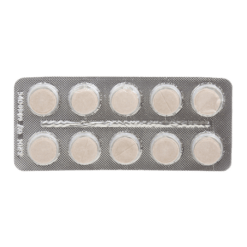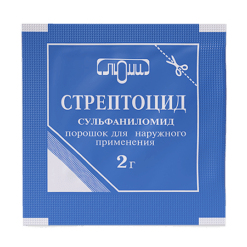-
×


-
×


Subtotal: €3.06




Subtotal: €3.06




Subtotal: €3.06
€8.51 €7.09
Pharmacotherapeutic group
The antibiotic is azalide
ATC code: J01FA10
Pharmacodynamics:
Azithromycin is a macrolide antibiotic of the azalide group. Reversibly binding to 50S-subunit of ribosomes of bacterial cells disrupts translocation of growing polypeptide chain from aminoacyl site to peptide site which leads to suppression of protein synthesis in bacterial cells.
Sensitive: aerobic gram-positive microorganisms – Staphylococcus aureus (methicillin-sensitive) Streptococcus pneumoniae (penicillin-sensitive) Streptococcus pyogenes aerobic gram-negative microorganisms – Haemophilus influenzae Haemophilus parainfluenzae Legionella pneumophila Moraxella catarrhalis Pasteurella multocida Neisseria gonorrhoeae; Anaerobic microorganisms: Clostridium perfringens Fusobacterium spp. Prevotella spp. Porphyromonas spp.; others – Chlamydia trachomatis Chlamydia pneumoniae Chlamydia psittaci Mycoplasma pneumoniae Mycoplasma hominis Borrelia burgdorferi.
Moderately sensitive: Streptococcus pneumoniae (moderately sensitive or penicillin-resistant).
Resistant: aerobic gram-positive microorganisms – Enterococcus faecalis beta-hemolytic Streptococcus spp. group A Staphylococcus spp. (methicillin-resistant) including Staphylococcus aureus resistant to erythromycin and other lincosamide macrolides; anaerobes: Bacteroides fragilis.
Pharmacokinetics:
Asithromycin quickly penetrates from blood plasma into tissues. Being concentrated in phagocytes and without affecting their function azithromycin migrates to the center of inflammation and accumulates directly in infected tissues. Pharmacokinetic profile of azithromycin is characterized by low concentration in blood plasma and high concentration in tissues.
In healthy volunteers with intravenous infusion of azithromycin at a dose of 500 mg (solution concentration 1 mg/ml) for 3 hours, the maximum drug concentration Cmax in plasma was 11 mcg/ml at a baseline concentration of 018 mcg/ml. Similar values were observed in patients with community-acquired pneumonia who received the same therapy for 2 to 5 days (Cmax 36 µg/ml at a baseline concentration of 02 µg/ml).
The half-life of the drug is 65-72 hours.
The binding to plasma proteins decreases with increasing blood concentrations of azithromycin. Azithromycin has a percentage of protein binding equal to 51 at a concentration of 002 µg/ml and 7% at a concentration of 2 µg/ml.
After intravenous administration, azithromycin is distributed into most tissues and body fluids. High level of the observed volume of distribution (on average 32 l/kg) and plasma clearance (108 ml/min/kg) suggest that long half-life of the drug is caused by accumulation of antibiotic in tissues followed by its slow release.
It easily passes through histohematic barriers. It penetrates well into the respiratory tract, genitourinary organs and tissues, including prostate, skin and soft tissues; it accumulates in lysosomes in low pH environment (which is especially important for eradication of intracellularly located pathogens). It is also transported by phagocytes: polymorphonuclear leukocytes and macrophages. It penetrates through cell membranes and generates high concentrations in cells.
The concentration in the foci of infection is significantly higher (24-34%) than in healthy tissues and correlates with the severity of inflammatory edema. In the body it is maintained in effective concentrations for 5-7 days after the last dose. The main pathway of biotransformation is N-demethylation in the liver.
The intestine excretes mainly unchanged. Insignificant amount of the drug is excreted by the kidneys. The kidneys on the first day excreted 11% and after 5 days 14% of the intravenously administered dose.
Infectious and inflammatory diseases caused by microorganisms sensitive to the drug:
1 capsule contains the active ingredient:
Azithromycin (in the form of azithromycin dihydrate – 262.03 mg) – 250 mg.
Auxiliary substances:
Lactose anhydrous – 163.60 mg* (151.57 mg),
Corn starch – 47.00 mg,
Sodium lauryl sulfate – 0.94 mg,
Magnesium stearate – 8.46 mg,
Capsule shell composition:
Titanium dioxide E 171 – 1.44 mg,
Patent blue dye V E 131 – 0.0164 mg,
Gelatin – up to 96 mg.
* The amount of lactose anhydrous depends on the activity of the active ingredient.
Overly, 1 hour before or 2 hours after meals, once a day.
Infections of the upper and lower respiratory tracts are prescribed 500 mg/day for 3 days (course dose – 1.5 g).
Infections of the skin and soft tissues – 1 g/day on the first day for 1 course, further 0.5 g/day daily, from day 2 to day 5 (cumulative dose – 3 g).
In case of uncomplicated urethritis and/or cervicitis 1 g is prescribed once.
In Lyme disease (borreliosis) to treat the initial stage (erythema migrans) it is prescribed 1 g on day 1 and 500 mg daily from day 2 to day 5 (course dose – 3 g).
In diseases of the stomach and duodenum associated with Helicobacter pylori 1 g daily for 3 days is prescribed in combination therapy.
If 1 dose of the drug is missed, the missed dose should be taken as soon as possible and the subsequent doses should be taken 24 hours apart.
Simultaneous use of Chemomycin and antacids (aluminum- and magnesium-containing) slows down the absorption of azithromycin.
Ethanol and food slow down and decrease the absorption of azithromycin.
When co-administration of warfarin and azithromycin (in usual doses) no change in prothrombin time was found, but considering that the anticoagulant effect of macrolides and warfarin may increase, patients need careful monitoring of prothrombin time.
The combined use of azithromycin and digoxin increases the concentration of the latter.
When azithromycin is used concomitantly with ergotamine and dihydroergotamine there is increased toxic effect of the latter (vasospasm, dysesthesia).
The co-administration of triazolam and azithromycin decreases clearance and enhances the pharmacological effects of triazolam.
Asithromycin slows down excretion and increases plasma concentrations and toxicity of cycloserine, indirect anticoagulants, methylprednisolone, phelodipine, and drugs that undergo
microsomal oxidation (carbamazepine, terfenadine, cyclosporine, hexobarbital, ergot alkaloids, valproic acid, disopyramide, bromocriptine, phenytoin, oral hypoglycemic agents,
Theophylline and other xanthine derivatives) – due to inhibition by azithromycin of microsomal oxidation in hepatocytes.
Lincosamines weaken the effectiveness of azithromycin, and tetracycline and chloramphenicol enhance it.
Pharmaceutical interactions
Pharmaceutically azithromycin is incompatible with heparin.
The safety and efficacy of Chemomycin Injection in children under 16 years of age have not been established.
The drug should not be administered over a longer course than indicated because the pharmacokinetic properties of azithromycin allow for a short dosing regimen.
Possible superinfections (including fungal ones) when treated with Chemomycin (as with any antibiotic therapy).
Diarrhea/pseudomembranous colitis caused by Clostridium difficile may develop when using Chemomycin. Because of this, patients with diarrhea should be monitored closely.
After discontinuation of treatment, hypersensitivity reactions may persist in some patients and require specific therapy under medical supervision.
With the potential for CNS side effects, caution should be exercised when driving vehicles and machinery.
– Hypersensitivity to antibiotics of the macrolide group;
– Severe hepatic and renal impairment;
– Children under 16 years of age;
– Simultaneous use with ergotamine and dihydroergotamine.
In moderate hepatic and renal dysfunction, patients with or predisposed to arrhythmias and QT interval prolongation when terfenadine warfarin digoxin is co-administered.
Central nervous system: dizziness/vertigo headache somnolence seizures; asthenia insomnia hyperexcitability fainting aggression anxiety nervousness.
Sense organs: tinnitus reversible hearing impairment up to deafness (when taking high doses for a long time) visual impairment impairment of perception of taste and smell.
Cardiovascular system disorders: palpitations arrhythmia including ventricular tachycardia increased QT interval bidirectional ventricular tachycardia decreased blood pressure.
Digestive system disorders nausea vomiting diarrhea abdominal pain and cramps liquid stools flatulence indigestion cholestatic jaundice hepatitis gastritis altered liver function laboratory values constipation color changes tongue pseudomembranous colitis pancreatitis necrosis liver failure (possibly fatal).
Blood and lymphatic system disorders: thrombocytopenia neutropenia leukopenia neutrophilia.
Allergic reactions: itching skin rash angioneurotic edema urticaria photosensitization anaphylactic reaction including edema (in rare cases fatal) erythema multiforme Stevens-Johnson syndrome toxic epidermal necrolysis.
Motor system disorders: arthralgia.
Urinary system disorders: nephritis acute renal failure.
Local reactions: pain and inflammation at the site of administration.
Others: candidiasis including oral and genital fatigue malaise anorexia vaginitis.
Symptoms: nausea, temporary hearing loss, vomiting, diarrhea.
Treatment: gastric lavage, symptomatic therapy.
In pregnancy Chemomycin is administered only when the expected benefit of therapy for the mother exceeds the potential risk to the fetus.
If it is necessary to use the drug during lactation, discontinuation of breastfeeding should be considered.
| Shelf life | 3 years |
|---|---|
| Conditions of storage | In a place protected from light and moisture, at 15-25 °C |
| Manufacturer | Chemopharm A.D., Serbia |
| Medication form | capsules |
| Brand | Chemopharm A.D. |
Buy Chemomycin, 250 mg capsules 6 pcs with delivery to USA, UK, Europe and over 120 other countries.